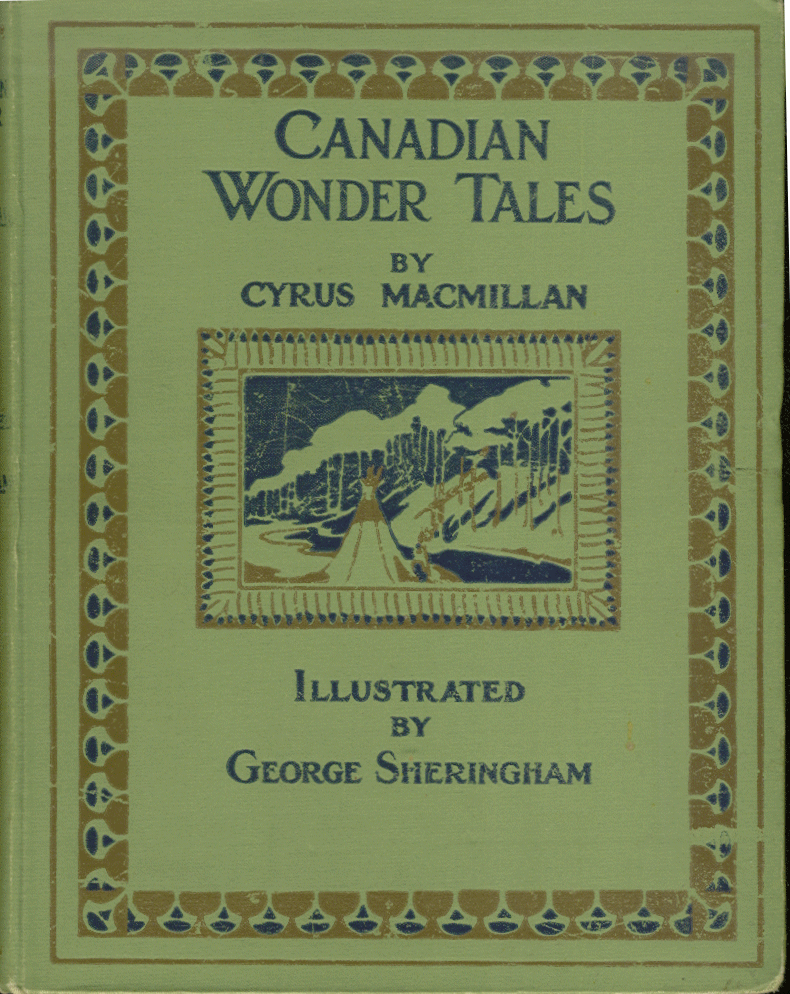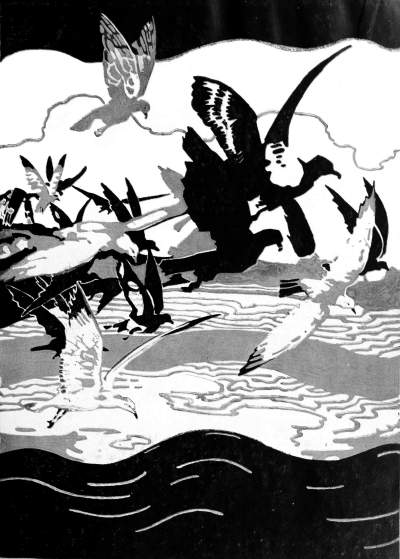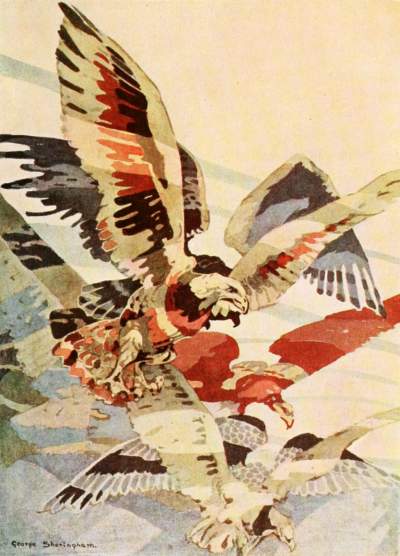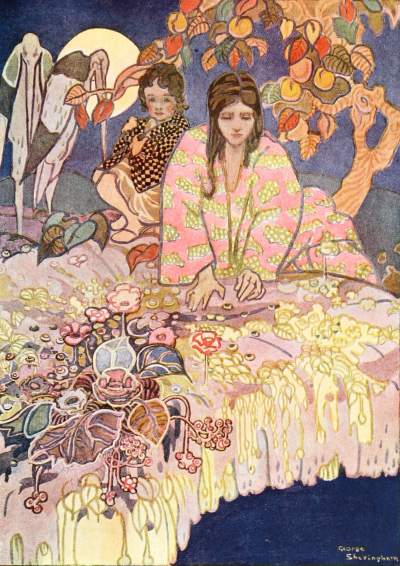©Copyright 2014 Amy Driedger, Ryerson University.

Introduction
On March 11, 1919, Lucy Maud Montgomery wrote in her journal, “I began work on my tenth novel today. It is to be another ‘Anne’ story – and I fervently hope the last – dealing with her sons and daughters during the years of war. That will end Anne – and properly. For she belongs in the green untroubled pastures and still waters of the world before the war.” (Tector 72). Montgomery was not talking about Anne’s House of Dreams, but this quote sums up her thoughts on writing about her red-headed creation, Anne Shirley.
In looking at a book published during the war that’s content has nothing to do with the war opens the path for where to look and what to follow to connect this book to children’s books and war. There’s a focus on the context surrounding our author, Lucy Maud Montgomery. I am interested in the decision made by Montgomery to produce another Anne story during the Great War.
It’s important to look to the past, as we hear so often, because the past can teach us a lot about where we are going and can, hopefully, help us learn from past mistakes. Children learn about the past through reading stories portraying times that cannot be lived through ever again. There will also be a look at how important this war and how it was portrayed or not portrayed has affected the identity of Canada.
Summary of Anne’s House of Dreams

In the beginning of our story, the newlyweds move to a town called Four Winds Point because Gilbert decided to take over his uncle’s medical practice. Anne makes herself at home, quickly becoming fond of her mysterious and tortured neighbour, Leslie Moore. Leslie’s story is one of tragic circumstances – she lost her father and brother early in her life and was forced by her mother to marry a man at the age of 16. The man whom she married, Dick Moore, went on a voyage out to sea and went missing. As Leslie was beginning to feel free of her ties to him, he was rescued and brought back with severe brain damage.
As the book goes on, Anne and Leslie become closer to each other, as Anne goes through losing an infant and Leslie begins to fall for Owen Ford, a man boarding with her. As the two fall deeper in love, the
realization that Leslie is trapped within a loveless marriage
hits them both and Owen leaves her.
Gilbert is fixated on helping Dick Moore and believes he can perform a surgery to fix his damaged brain. The surgery is a success and “Dick” realizes he is George, the real Dick Moore’s cousin. In light of this realization, Leslie is free from the bonds of her marriage, Owen returns, and the two become engaged. Throughout the story, Anne and Gilbert’s family grows and, reaching into reader’s nostalgia, names her children after important people in her life.
A free online version of this book can be found here .
Production & Reception

What do you get when you add another, arguably, “escapist” novel to a best-selling series that thrives because of the protagonist’s vivid imagination? Well, another best-seller, of course! As shown in The Globe’s “Books of the Day” article, high praise was given to Montogmery “nine years after the original Anne of Green Gables” came out (Garvin). John Garvin, the reviewer, goes on to boast about the old friends/characters being reason enough to read the new addition to the series, as well as the “original, colourful, new characters”.
Anne Shirley: A Reflection of Montgomery’s Self-Fantasy?
As Anne’s House of Dreams‘ content has nothing to do with the war, a lot of digging into Lucy Maud Montgomery’s life had to be done to see the connections between the characters and storyline created and why this was an important book for children during the war.
On September 27, 2008, in an article in the Globe and Mail, Kate Macdonald Butler, Montgomery’s grandchild, admitted that her grandmother had, in fact, committed suicide, in an attempt to open the discussion on depression and to help take away the stigma of this illness. (Cowger 188) Within this article, there is claim to Anne Shirley being, at least sort of, an autobiographical character, and as such, she is looked at differently in light of the new information that was given on Montgomery from her grand daughter and about her depression. (Cowger 188) There are quite a few similarities between Montgomery and her creation. Montgomery’s upbringing was similar to Anne, her mother died and her father couldn’t take care of her, so she was raised by her grandparents. (Cowger 189)
Cowger goes on to explain how the longer the story of Anne goes on, the more disenchanted she becomes (196). This is most evident, arguably, in Anne’s House of Dreams, as the storylines and subploys focus on depression, deaths, suicides, and unfulfilled lives. For example, even before the time period in the book, Leslie’s father kills himself (Montgomery 72). Further on, as was previously mentioned, Anne’s first child dies as an infant and even when she repairs her broken heart, she is laced with a seemingly new “grim shape of fear [that] shadows and darkens her vision” (Montgomery 165).
As presumptuous as it may seem to say Montgomery was projecting herself into Anne, that also didn’t stop and hasn’t stopped her fan base. In reality, the fact that reviews and profiles of her in newspapers gave the same qualities they found in Anne, to Montgomery – wholesome, modest, youthful, rural environment – helped her become one of, if not the most, renown authors in Canadian literature (Hammill 652). If you think about it, Anne Shirley has more fame or more of a namesake than Lucy Maud Montgomery but Montgomery’s name has stuck because of the association with Anne’s name (Hammill 652). As a child, I always wanted to go to Anne’s house in Prince Edward Island, not Montgomery’s and when you enter Prince Edward Island, some of the licence plates read “Home of Anne of Green Gables”, with no mention of Montgomery.
A More Personal Look at The Production of Anne’s House of Dreams
The question must come up after finding out so much about Montgomery’s thoughts and perceptions about the world in general – again, why write just another Anne story? Something to remember is that nostalgia was very important to young and old Canadians, alike. Anne was a familiar, charming character, and to see her in a world where war still didn’t exist was comforting and, some would argue, needed.
All the same, Montgomery wanted to write about things deeper than another story about the ongoing life of her beloved and idealistic heroine, Anne. She longed to write about current events and give more than just an escape. She felt constrained by her novels about Anne because, as much as she knew what she wanted to write about, she felt trapped by her audience and publishers, knowing they wanted more Anne (Tector 72). Later on, Montgomery would fulfill the need she felt, when she wrote Rilla of Ingleside (1921), a book in which she could write about war within the world of Anne, but separate from Anne. So, during the war years, she continued to write nostalgically.
A seemingly unimportant task, such as writing about the same red-head going through the same emotions, finding more kindred spirits, becomes one of the most important tools for humans trying to cope during a traumatic time, such as the first world war (Cook). “The Great War was Canada’s coming-of-age event.” For the nation, to take part in these four years changed the country, as a whole, as it did for the rest of the world, as well (Cook).
Canada Finds Its Own Identity
It has been said that the first world war was the time when Canada really grew into its own country, choosing to fight not under but alongside Britain, and demanding to be recognized as a separate country – a country that had a significant impact on the results of the first world war.
Canada’s decisive role in the last 100 days of the war alone, and the innumerable contributions and sacrifices made at home were the divisions caused by conscription, the persecution of ethnic minorities and political dissenters, the manipulation of the voting system, and nearly a quarter million Canadians killed or wounded and countless others psychologically scarred for the rest of their lives (Blake 166).
At the time of the inter-war years, no other author had the same amount of power as Montgomery had then and as she has still, a century later (Hammill 653). Montgomery is partially responsible for exporting Canadian literature and culture about the world and during the war this could be seen through the popularity of her novels (Hammill 653).
Conclusion
Montgomery played a pivotal role in shaping our Canadian identity. Her impact may not, yet, be realized, but she has helped shape our culture, which can be seen though the memorable characters she creates, such as Anne, who has the ability to change her world through the power of the word, as she is a well-known bookworm and loves to write (Tector 82). Although Anne’s House of Dreams was seemingly “just another Anne book”, the series remained an important staple in the lives of Canadian children because it offered a safe escape to a familiar land. Montgomery is a fascinating woman, who struggled with her own demons but put them on the shelf, or rather, wrote through them, creating story lines and characters that resonated with a hungry audience. The book’s production is important to look at, as well as the context surrounding the production, to see what was in demand during the first world war. Montgomery, always faithful to her audience, gave what was asked and used her skills to create a sense of nostalgia that was high in demand.
Further Viewing
Anne of Green Gables: The Continuing Story . This film re-imagined what Anne’s world would have been like if the war was present in the last books in Montgomery’s series.
Works Cited
Blake, Raymond et al. Narrating a Nation: Canadian History Post-Confederation. Toronto: McGRaw-Hill Ryerson Ltd., 2011. Print.
Cook, Tim. “Quill and Canon: Writing the Great War in Canada.” American Review of Canadian Studies 35.3 (2005): 503–530. Print.
Cowger, Ashley. “From ‘Pretty Nearly Perfectly Happy’ to ‘the Depths of Despair’: Mania and Depression in L. M. Montgomery’s Anne Series.” Lion & the Unicorn 34.2 (2010): 188–199. JSTOR. Web. 09 Feb. 2014.
Garvin, John W. “Books of the Day.” The Globe (1844-1936) 24 Aug. 1917. ProQuest. Web. 19 Feb. 2014.
Hammill, Faye. “‘A New and Exceedingly Brilliant Star’: L. M. Montgomery, Anne of Green Gables, and Mary Miles Minter.” Modern Language Review 101.3 (2006): 652–670. ProQuest. Web. 09 Feb. 2014.
Montgomery, L. M. Anne’s House of Dreams. Toronto: McClelland & Stewart, 1917. Print.
—. My Dear Mr. M: Letters to G. B. Macmillan from L. M. Montgomery. Toronto: Oxford University Press, 1992. Print.
Tector, Amy. “A Righteous War?: L. M. Montgomery’s Depiction of the First World War in Rilla of Ingleside” Canadian Literature 179 (2003): 72–86. Academic Search Premier. Web. 21 Feb. 2014.
Works Consulted
Epperly, Elizabeth, and Irene Gammel. L. M. Montgomery and Canadian Culture. Toronto: University of Toronto Press, 1999. Print.
Lyons, Chris. “‘Children Who Read Good Books Usually Behave Better, and Have Good Manners’: The Founding of the Notre Dame de Grace Library for Boys and Girls, Montreal, 1943.” Library Trends 55.3 (2007): 597–608. ProQuest. Web. 21 Feb. 2014.


















